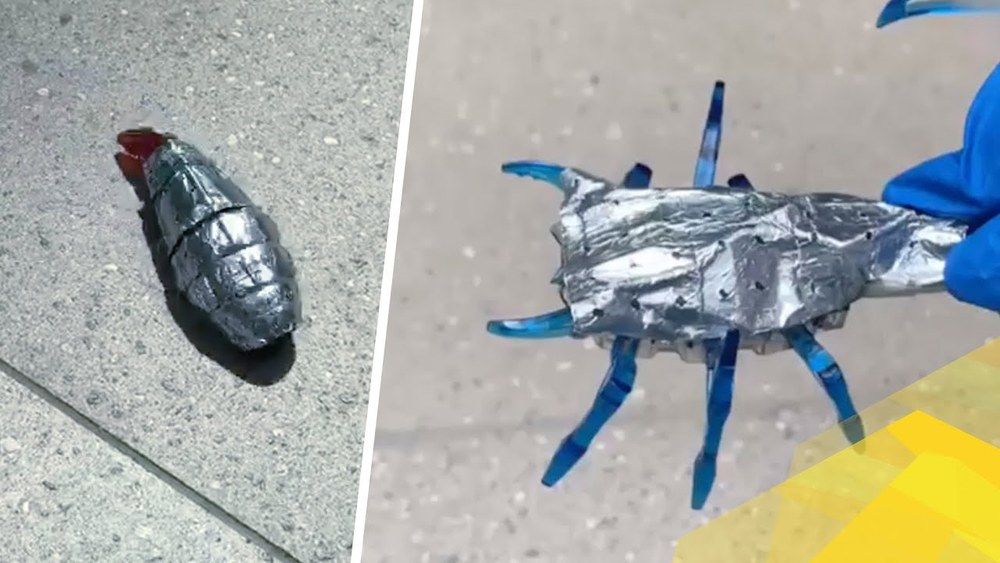Aug 29, 2020
Troops To Test AFRL’s THOR Drone Killer This Fall
Posted by Quinn Sena in categories: drones, electronics
THOR puts high-powered microwaves to fry drone swarms’ electronics in a rugged and deployable package.
THOR puts high-powered microwaves to fry drone swarms’ electronics in a rugged and deployable package.

https://youtube.com/watch?v=OyVGiJacQqI
The tactic has become widespread on battlefields overseas and now appears to be proliferating to organized crime.
Amazon’s latest drone patent points at a new way of using a drone that doesn’t involve delivering packages. Amazon wants to replace ski lifts. The drone uses a rope to pull people up the side of a mountain, just like Casey Neistat did in this video in December 2016.
💥💥💥💥💥💥💥Humanitarian Day, the UK Space Agency announced £3.4 million of new funding for 10 leading-edge projects, backing UK academics using space to tackle global development problems – from the spread of malaria to human trafficking and forced labor. In 2018, there were an estimated 228 million cases and 405,000 deaths from malaria alone.
These projects will develop solutions to global challenges that will open up new opportunities for UK space expertise to help countries overseas to deal with myriad problems. Among the others being backed are space-based solutions that will help protect wildlife habitats in Kenya and another that will improve resilience to flooding in Bangladesh, which is suffering the most prolonged monsoon rains in decades.
On World Humanitarian Day, the UK Space Agency announced £3.4 million of new funding for 10 leading-edge projects, backing UK academics using space to tackle global development problems – from the spread of malaria to human trafficking and forced labor. In 2018, there were an estimated 228 million cases and 405,000 deaths from malaria alone.
Ahead of a likely ban on the US federal government’s use of Chinese-made quadcopters, including popular DJI drones, the Department of Defense has approved the products of five US-based unmanned air vehicle (UAV) makers for government use.
Those companies are Altavian, Parrot, Skydio, Teal and Vantage Robotics.
Small UAVs from these manufacturers have been deemed cyber-secure by the Pentagon – not vulnerable to backdoor spying that some suspect might be possible from the video cameras and other sensors attached to Chinese-made DJI drones. The US Congress is considering banning the US federal government from using foreign-made drones as part of its 2021 National Defense Authorization Act.

Amazon isn’t just thinking about delivery with its drones.
The new patent made public this week reveals an idea for a drone-powered towing system designed for skiers, surfers, skaters, and more.
By Elias Marat
Researchers for the U.S. Army are hoping to formulate a new shape-shifting material that can heal itself on its own in hopes to achieve the kind of futuristic killing technology famously depicted in the 1991 science-fiction film, Terminator 2.
In fact, the film’s villain, the T-1000, directly provided the inspiration to one of the Army engineers working on a project to develop “soft robotic” drones and unmanned aircraft based on flexible, self-repairing and self-reconfiguring materials, reports Military.com.

This approach to increasing capacity will be particularly important as robots shrink to the microscale and below—scales at which current stand-alone batteries are too big and inefficient.
“Robot designs are restricted by the need for batteries that often occupy 20% or more of the available space inside a robot, or account for a similar proportion of the robot’s weight,” said Nicholas Kotov, the Joseph B. and Florence V. Cejka Professor of Engineering, who led the research.
Continue reading “Biomorphic batteries could provide 72x more energy for robots” »
Click on photo to start video.
The world’s first manned racing drone just took its first flight… Now, this is pod racing! 🙌 🤯

The terrorist or psychopath of the future, however, will have not just the Internet or drones—called “slaughterbots” in this video from the Future of Life Institute—but also synthetic biology, nanotechnology, and advanced AI systems at their disposal. These tools make wreaking havoc across international borders trivial, which raises the question: Will emerging technologies make the state system obsolete? It’s hard to see why not. What justifies the existence of the state, English philosopher Thomas Hobbes argued, is a “social contract.” People give up certain freedoms in exchange for state-provided security, whereby the state acts as a neutral “referee” that can intervene when people get into disputes, punish people who steal and murder, and enforce contracts signed by parties with competing interests.
The trouble is that if anyone anywhere can attack anyone anywhere else, then states will become—and are becoming—unable to satisfy their primary duty as referee.
Continue reading “Omniviolence Is Coming and the World Isn’t Ready” »
